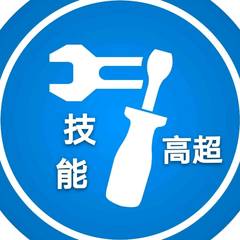热门推荐
 留学生杭州余杭区f类人才认定标准是什么
留学生杭州余杭区f类人才认定标准是什么
 留学生喝什么让人三句话就听出来
留学生喝什么让人三句话就听出来
 留学生祖儿另一个名字叫什么来着
留学生祖儿另一个名字叫什么来着
 留学生在国外听不懂课怎么办用什么app
留学生在国外听不懂课怎么办用什么app
 一年制的留学生什么时间参加校招
一年制的留学生什么时间参加校招
 为什么留学生疯疯癫癫不能说话
为什么留学生疯疯癫癫不能说话
 在澳大利亚留学第一步要先办什么
在澳大利亚留学第一步要先办什么
 留学生为什么文科生比理科生多
留学生为什么文科生比理科生多
雅思同义词如何转换
在雅思考试中,使用同义词替换是一种常见的策略,可以提高答案的多样性和准确性。以下是一些有效的同义词替换方法:
同义词替换
直接使用与原文中关键词汇意思相近的同义词。例如,将“lead to”替换为“result in”。
词性转换
通过改变单词的词性来进行替换,如将名词转换为动词,或动词转换为名词。例如,将“army”替换为“military”。
短语替换
使用包含相同或相似意思的短语来替换原文中的词汇或短语。例如,将“build more roads”替换为“construct additional lanes”。
综合使用各种方法
结合以上几种方法,灵活运用同义词、词性转换和短语替换,以增加答案的丰富性和变化性。例如,在表达“利益”和“好处”时,除了使用“benefit”外,还可以使用“advantage”或“profit”等词汇。
示例
同义词替换
原文:“The company has seen significant growth in sales.”
替换后:“The enterprise has experienced considerable expansion in revenue.”
词性转换
原文:“The manager analyzed the data.”
替换后:“The manager evaluated the statistics.”
短语替换
原文:“She is responsible for managing the team.”
替换后:“She has the duty of overseeing the group.”
综合使用
原文:“The new policy will benefit the company in the long run.”
替换后:“The new policy will prove advantageous for the enterprise in the long term.”
通过以上方法,考生可以在雅思写作和阅读中有效地使用同义词替换,提高答案的准确性和多样性,从而提升整体得分。
猜你喜欢内容
-
留学生杭州余杭区f类人才认定标准是什么
根据杭州余杭区官方信息,留学生申请F类人才认定需满足以下条件之一:学历背景 博士或硕士研究生,需为Q...
-
留学生喝什么让人三句话就听出来
留学生群体因文化背景、饮食习惯和个人口味差异较大,但以下饮品具有较高的普遍性和辨识度,三句话内容...
-
留学生祖儿另一个名字叫什么来着
很抱歉,根据现有信息,关于留学生祖儿的另一个名字,目前可查的信息中并未明确提及。根据搜索结果分析...
-
留学生在国外听不懂课怎么办用什么app
针对留学生在国外听不懂课的问题,以下是综合多个权威来源的解决方案及推荐应用:Otter 支持手机、平板...
-
一年制的留学生什么时间参加校招
一年制留学生参加校招的时间安排需根据入学时间、毕业时间以及校招时间线综合判断,具体规则如下:国内...
-
为什么留学生疯疯癫癫不能说话
留学生出现沉默或异常行为(如"疯疯癫癫")可能由多种因素综合作用,以下是主要分析:教育体系差异 国内...
-
在澳大利亚留学第一步要先办什么
在澳大利亚留学的第一步,首要任务是 选择合适的院校和专业 。以下是具体建议和注意事项:研究院校排名...
-
留学生为什么文科生比理科生多
留学生中文科生比例较高的现象可以从多个维度进行分析,结合国内外教育环境、社会认知及个人发展需求综...
-
花几百万出去留学到底有什么用
花费数百万出国留学,其价值远超经济层面的回报,主要体现在以下几个方面:国际竞争力增强 留学经历能显...
-
留学生f1转f2是什么意思
留学生从F1签证转为F2签证(家属签证)是指在满足一定条件下,将留学生身份变更为其F1配偶或未成年子女...





















